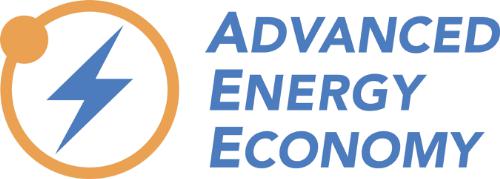
A quiet crisis in the energy sector is building around the quality of and access to energy data in the United States.
Two distinct but related energy data issues are currently in play. The first is growing concern with the lack of up-to-date renewable energy and energy efficiency data from the Energy Information Administration (EIA), the federal agency responsible for forecasting energy trends.
And the second is reluctance on the part of regulated electric utilities to share energy data with others. At a time when the energy world is transitioning from fossil fuel to clean energy resources, access to up-to-date, real-world data is important to energy planning, academic research and energy policy analysis, as well as the consumer’s ability to participate in energy matters.
Federal Data is Sorely Outdated:
EIA energy forecasts are very important to researchers, policymakers, and stakeholders. Not only do these forecasts deliver a source of baseline data, they also provide a jumping off point for further analysis. And yet a June report from the trade association the Advanced Energy Economy (AEE) criticized EIA for underreporting renewable energy deployment. The report, “Competitiveness of Renewable Energy and Energy Efficiency in U.S. Markets,” cites two examples of EIA underreporting renewable energy growth.
First, the report notes that “the installed generating capacity of solar power is likely to double between 2014 to 2016, based on market analysis that take into account actual projects in the pipeline. Yet in the EIA, Annual Energy Outlook 2015 forecast, solar capacity does not double until 2026.”
The report also points to even more troubling EIA data on forecasts for wind installations: “U.S. wind installations have averaged about 6.5 GW per year from 2007 to 2014, but the 2015 (EIA) Annual Energy Outlook projects a total of 6.5 GW of new wind will be added between 2017 and 2030, less than one-tenth the average rate in recent years.
AEE authors point out that government agency underestimates like these have a way of perpetuating inaccurate projections for planning and policy purposes. Indeed, organizations such as the Union of Concerned Scientists, the Natural Resources Defense Council, and the Solar Energy Industries Association, have all criticized the EIA’s low renewable energy projections.
Lest one think this issue only matters to data geeks and policy analysts, note that the EIA’s renewable energy data impacts energy price projections as well, making this an issue for consumers, ratepayers, and the general public alike.
This data is also critical to the growing debate currently surrounding the Environmental Protection Agency (EPA) and the Clean Power Plan. Several states are bringing court challenges to the Clean Power Plan, and cost of implementation is a central argument in many of these cases. And yet the cost of solar power generation has dropped so dramatically and quickly that they are now half of what the EIA Outlook estimates in their reports. (Note: a further complication is that EIA data tends to be behind by about a year and does not even include smaller distributed energy such as household solar PV smaller than 1 MW).
This means that even some of the EPA’s initial planning that relied on EIA data may be off the mark. Moving forward, it will be critically important to improve the tracking and publication of energy data once the Clean Power Plan is implemented. Now is definitely the time to improve the energy data system.
Utilities Are Not Sharing Their Critical Data:
The other issue is one of electric utilities not releasing energy data for independent analysis. The California Public Utility Commission (CPUC) is currently considering a case that revolves around utilities’ requirements vis-à-vis distribution resource plans (DRP). Though this may at first appear like an insider’s game, the stakes are bigger than they first appear.
The basics: Independent energy producers are attempting to incorporate distributed energy resources (DERs) – i.e., energy storage, distributed generation, microgrids, et al. – into the multi-billion dollar California energy market. These third-party energy producers and products groups claim that regulated utilities are not sharing enough distribution market data critical to determine where the DERs could best be deployed.
Comments filed with CPUC by groups including the Environmental Defense Fund, the California Energy Storage Alliance, and the Independent Energy Producers are asking regulators to push the utilities to provide this data more willingly. Many observers feel that the California DRPs process is going to be the first major step in greater transparency for regulated electric utilities and that the issue of utility transparency and access to energy data by independent parties will be playing out in more and more states in the future. The case, which could influence how the issue is handled going forward, merits close attention.
U.S. Solar Energy Market on Pace for Record in 2015 But Challenges Ahead

Due to the time delays and gaps in collecting data on solar power installations at federal energy data agencies (this Power Points’ main story), solar industry publications and data are the only way to get up-to-date energy data. Quarterly and annual reports gathered by GTM Research and the Solar Energy Industries Association (SEIA) are available for purchase, but executive summary data is free to the public and can be downloaded here.
A quick review of the data shows that 1,393 megawatts (MW) of solar power was installed in the second quarter of 2015. When combined with first quarter data, the year-to-date total is 2,722 MW. Early indications suggest that the second half of 2015 will be even stronger. Solar installations for the first half of 2015 were up 70 percent over 2014, with installations for 2015 strong in both the residential and utility-scale areas. Early indications show solar installation growth for 2016, and yet some uncertainty remains, as the Investment Tax Credit (ITC) may sunset next year.
A bigger battle impacting solar energy growth is playing out now in at least 39 states where utilities have either implemented or are considering changes in the net energy metering laws. Likewise, utilities are seeking increases in the fixed rate charges in some states – e.g. last year three Wisconsin utilities sought and received fixed charge increases from the Public Service Commission. Changes in net metering laws and raising fixed rates are seen by some as measures to slow homeowner or small-scale PV installations. In contrast, some utilities in these markets argue that net metering is a revenue equity issue.
More on metering terminology:
Net metering is a policy that was designed primarily to encourage the installation of distributed generation such as solar photovoltaic (PV) and is a utility program that credits customers at retail energy rates for exportable electricity, the electricity not used at their home or business. The policy, sometimes referred to as “running the utility meter backwards”, provides a credit to the customer and has been adopted in 43 states in the U.S.
Fixed-rates charges, on the other hand, are costs that do not vary with energy usage. Fixed costs might include customer service charges, meters, distribution costs, others. Volumetric charges are based on electricity usage during the billing cycle, but typically include generation, distribution, transmission, and public purpose program costs.
Great Resource: North Carolina Tracks Energy Technology

For those interested in monitoring solar energy policy actions throughout the U.S., the North Carolina Clean Energy Technology Center (NCCETC) is an excellent source of solar energy policy trend data. NCCETC is located at North Carolina State University and receives funding from the U.S. Department of Energy’s SunShot initiative. It issues quarterly and annual reports tracking utility rate case action. According to the center’s most recent quarterly report, there were 32 cases in 18 states seeking residential customer monthly fixed rate charge increases of 10 percent or more.
Quarterly update reports are available here.
Final Report through 2014 is available here.
Along with tracking current policy actions, the NCCETC also worked with Meister Consultants Group to issue a report in August 2014 outlining a variety of alternative regulatory and rate design pathways. The report, “Rethinking Standby and Fixed Rate Charges: Regulatory and Rate Design Pathways to Deeper Solar PV Cost Reductions” is available here.

